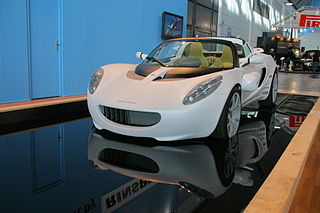https://www.youtube.com/watch?v=-sCHKdsRlzQ

Rinspeed sQuba
The sQuba, developed by Swiss company Rinspeed, is the world’s first car that can be driven both on land and under water.[1][2] The original idea by Rinspeed founder and CEO Frank M. Rinderknecht was inspired by the 1977 James Bond film The Spy Who Loved Me. The chassis from the Lotus Elise is used as the base for this vehicle.
Peel P50
The Peel P50 was a three-wheeled microcar originally manufactured from 1962 to 1965 by the Peel Engineering Company on the Isle of Man. It was listed in the 2010 Guinness Book of Records as the smallest production car ever made.[3] It had no reverse gear but a handle at the rear allows the very lightweight car to be physically manoeuvred when required.
Kiravan
The KiraVan® Expedition System is comprised of a highly modified Unimog-based tractor, a fully custom composite trailer, and turbo-diesel motorbike. It supports a crew of three for on & off-road operations, with a significant compliment of custom advanced Glass-Cockpit, Driveline, Suspension, Hydraulics, Power, COMMS, NAV, Electro-Optical and scientific technology. It is an ongoing advanced vehicle R&D program designed and integrated by Applied Minds, LLC.
BMW Gina
The GINA Light Visionary Model is a fabric-skinned shape-shifting sports car concept built by BMW. GINA stands for “Geometry and functions In ‘N’ Adaptations”. It was designed by a team led by BMW’s head of design, Chris Bangle, who says GINA allowed his team to “challenge existing principles and conventional processes.” Other designers include Anders Warming..
Devel Sixteen
Devel Sixteen, and it might be the king of lofty statistics. Its Dubai-based backers are claiming it’ll use a 5,000-horsepower V16 and will reach a top speed of 348 miles per hour. The sprint to 62 mph will take just 1.8 seconds.
Terrafugia Transition
The Terrafugia Transition is a light sport, roadable airplane under development by Terrafugia since 2006.
The Rotax 912ULS piston engine powered, carbon-fiber vehicle is planned to have a flight range of 425 nmi (489 mi; 787 km) using either automotive premium grade unleaded gasoline or 100LL avgas and a cruising flight speed of 93 kn (107 mph; 172 km/h). Equipment includes a Dynon Skyview glass panel avionics system, an airframe parachute, and an optional autopilot.
On the road, it can drive up to 70 miles per hour (110 km/h) with normal traffic.
Superbus
The vehicle is a 15-meter-long electric vehicle with seating for 23 passengers accessible from 16 doors with a cruising speed of 250 kilometres per hour (160 mph) and a range of 215 kilometres (134 mi).
VW XL1
The Volkswagen XL1 (VW 1-Litre) is a two-person limited production diesel-powered plug-in hybrid produced by Volkswagen. The XL1 car was designed to be able to travel 100 km on 1 litre of diesel fuel (280 mpg‑imp; 240 mpg‑US), while being both roadworthy and practical. To achieve such economy, it is produced with lightweight materials, a streamlined body and an engine and transmission designed and tuned for economy.
F 015
The visionary research vehicle was born, a vehicle which raises comfort and luxury to a new level by offering a maximum of space and a lounge character on the inside. Every facet of the F 015 Luxury in Motion is the utmost reflection of the Mercedes way of interpreting the terms “modern luxury”, emotion and intelligence.
Splinter
The Splinter is a two-seater American supercar concept made of wood. It was created by a team led by Joe Harmon, an industrial designer from North Carolina. There are no plans to mass-produce this vehicle.

